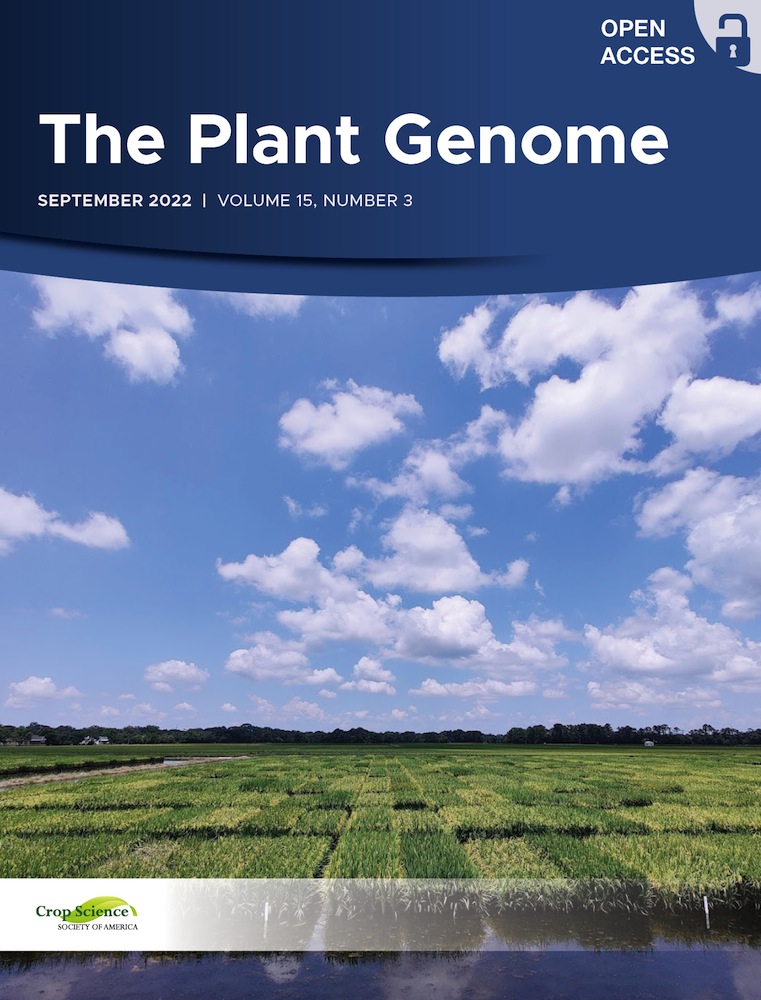Ver ítem
- xmlui.general.dspace_homeCentros Regionales y EEAsCentro Regional Tucumán - Santiago del EsteroEEA Santiago del EsteroArtículos científicosxmlui.ArtifactBrowser.ItemViewer.trail
- Inicio
- Centros Regionales y EEAs
- Centro Regional Tucumán - Santiago del Estero
- EEA Santiago del Estero
- Artículos científicos
- Ver ítem
Alfalfa genomic selection for different stress-prone growing regions
Resumen
Alfalfa (Medicago sativa L.) selection for stress-prone regions has high priority for sustainable crop–livestock systems. This study assessed the genomic selection (GS) ability to predict alfalfa breeding values for drought-prone agricultural sites of Algeria, Morocco, and Argentina; managed-stress (MS) environments of Italy featuring moderate or intense drought; and one Tunisian site irrigated with moderately saline water. Additional aims were to
[ver mas...]
Alfalfa (Medicago sativa L.) selection for stress-prone regions has high priority for sustainable crop–livestock systems. This study assessed the genomic selection (GS) ability to predict alfalfa breeding values for drought-prone agricultural sites of Algeria, Morocco, and Argentina; managed-stress (MS) environments of Italy featuring moderate or intense drought; and one Tunisian site irrigated with moderately saline water. Additional aims were to investigate genotype × environment interaction (GEI) patterns and the effect on GS predictions of three single-nucleotide polymorphism (SNP) calling procedures, 12 statistical models that exclude or incorporate GEI, and allele dosage information. Our study included 127 genotypes from a Mediterranean reference population originated from three geographically contrasting populations, genotyped via genotyping-by-sequencing and phenotyped based on multi-year biomass dry matter yield of their dense-planted half-sib progenies. The GEI was very large, as shown by 27-fold greater additive genetic variance × environment interaction relative to the additive genetic variance and low genetic correlation for progeny yield responses across environments. The predictive ability of GS (using at least 37,969 SNP markers) exceeded 0.20 for moderate MS (representing Italian stress-prone sites) and the sites of Algeria and Argentina while being quite low for the Tunisian site and intense MS. Predictions of GS were complicated by rapid linkage disequilibrium decay. The weighted GBLUP model, GEI incorporation into GS models, and SNP calling based on a mock reference genome exhibited a predictive ability advantage for some environments. Our results support the specific breeding for each target region and suggest a positive role for GS in most regions when considering the challenges associated with phenotypic selection.
[Cerrar]

Autor
Annicchiarico, Paolo;
Nazzicari, Nelson;
Bouizgaren, Abdelaziz;
Hayek, Taoufik;
Laouar, Meriem;
Cornacchione, Monica;
Basigalup, Daniel Horacio;
Monterrubio Martin, Cristina;
Brummer, Edward Charles;
Pecetti, Luciano;
Fuente
The Plant Genome : e20264 (First published: 12 October 2022)
Fecha
2022-10
Editorial
Wiley
ISSN
1940-3372
Formato
pdf
Tipo de documento
artículo
Palabras Claves
Derechos de acceso
Abierto
 Excepto donde se diga explicitamente, este item se publica bajo la siguiente descripción: Creative Commons Attribution-NonCommercial-ShareAlike 2.5 Unported (CC BY-NC-SA 2.5)
Excepto donde se diga explicitamente, este item se publica bajo la siguiente descripción: Creative Commons Attribution-NonCommercial-ShareAlike 2.5 Unported (CC BY-NC-SA 2.5)


